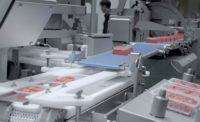Poultry producers must deliver safe food to the market in the most cost-effective way, and achieving this goal requires meticulous return-on-investment evaluations and cost-benefit analyses for all decisions.
“The poultry industry is on the brink of new regulations, which is why taking a data-driven approach is important,” said Arjun Ganesan, CEO of supply chain analytics platform solutions provider Ancera.
For poultry producers, a data-driven approach includes identifying underperforming farms in real time, enabling them to act quickly to improve their performance and profitability, Ganesan said.
Aiming to facilitate supply chain intelligence for producers to enhance their safety and profitability, Ancera has monitored 50 million birds to date, integrating more than 100 data sources into profiles for each USDA-FSIS-regulated facility by combining its proprietary diagnostic analytics, production history and open-source intelligence, Ganesan said.
“Equipped with actionable data, processors can swiftly identify suboptimal farms and improve their feed conversion, effectively increasing profitability,” he said.
He said large-scale datasets have shown the importance of regular sampling and statistical modeling of entire bird populations to ensure a comprehensive understanding of evolving health in a poultry production setting.
“We cannot emphasize enough that real world data is essential for managing animal health and improving performance outcomes,” Ganesan said. “There is a significant opportunity to avoid losses through advance detection of sub-optimal program performance four to eight weeks in advance, empowering live ops and veterinarians to proactively design and implement precise control programs.”
He said producers must precisely quantify production risk and manage program costs to allow managers, live ops, veterinarians and nutritionists to react quickly for optimizing feed conversion ratios and ensure broiler chickens consistently reach optimal weights.
“Depending on the complex location and the control program, there can be a lot of heterogeneity in the flocks, leading to unpredictability in productivity,” Ganesan said. “We have found that epidemiological models are imperative to making decisions across millions of birds. We’re starting with broiler operations, but these models can be utilized to evaluate and monitor various live production management outcomes.”

.png?height=96&t=1647275041&width=96)



Report Abusive Comment